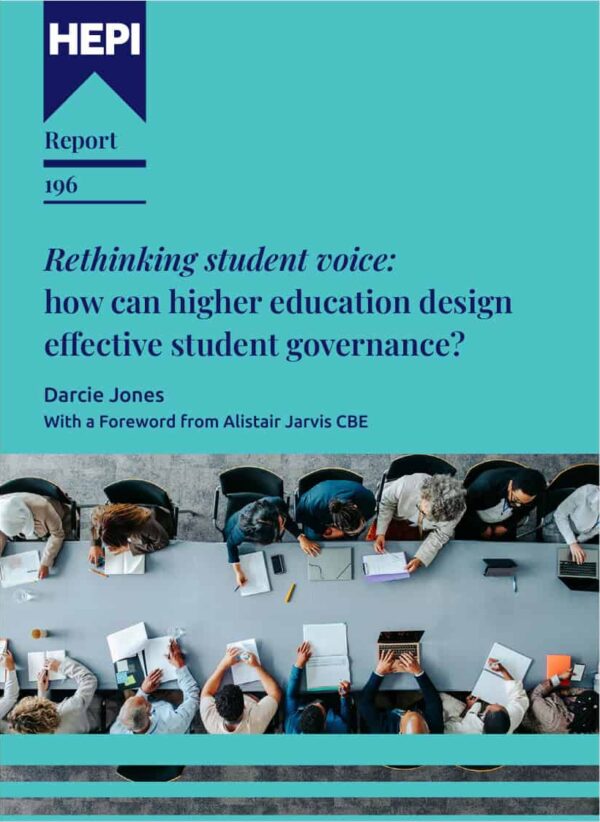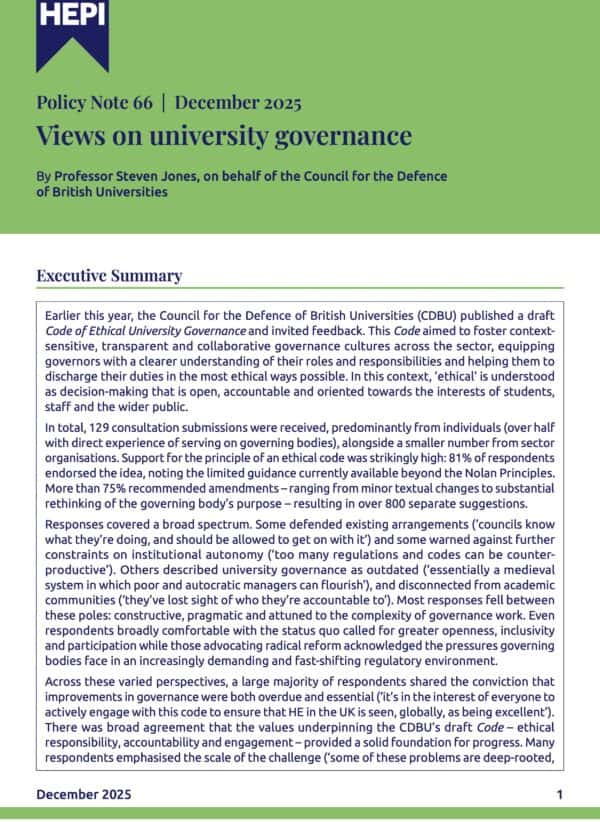Leave to Achieve?: A new framework for universities to drive local social mobility
By Dani Payne, Senior Researcher and Education Lead at the Social Market Foundation.
University remains the most effective pathway for disadvantaged individuals to achieve upward social mobility. Graduates earn more, are less likely to be unemployed, and report higher levels of health, happiness and civic engagement. Yet, despite this individual impact, higher education’s benefits often fail to translate into positive outcomes for local communities.
Recent research from the Sutton Trust ranked constituencies by social mobility. Most interesting is the bottom 20. More than half have at least one university within their immediate locality, and some have as many as 18 in their wider region. Essentially, having a university – or, indeed, many universities – in your region doesn’t guarantee improved local social mobility.
The need for a new social mobility framework
The government’s ‘opportunity mission’ is built on the principle that every child, in every community, should have a fair chance to succeed.
But rising costs, frozen maintenance support, demographic shifts and widening attainment gaps threaten progress made on access. Moreover, targets tend to be institution-specific, creating duplications and silos, and encouraging competition between providers. Selective universities continue to meet access targets by disproportionately recruiting disadvantaged pupils from high-attaining London boroughs, leaving local disadvantaged learners behind – even when world-class institutions are right on their doorstep.
We must broaden how we assess universities’ social mobility impact. To be able to understand when, why and how the benefits of an institution do or don’t reach into local communities, we must also consider their roles as major employers, civic actors and research hubs.
In our new report, Leave to Achieve?, we set out a new framework for how universities can conceptualise and measure their local social mobility contribution. The framework consists of four key pillars, underpinned by the need for regional collaboration and long-term planning.
1. Educational opportunities for local people
Access to higher education varies starkly by region: 27% of disadvantaged pupils in London hold an undergraduate degree by age 22, compared to just 10% in the South West.
Universities must work with local schools and colleges to raise attainment and create alternative entry pathways. They should be considering the extent to which they nurture and recruit talent locally, supporting pupils to progress and succeed. A place-based approach to widening participation, developed collaboratively with other regional providers, ensures local talent is not just nurtured but retained.
Some existing initiatives show promise. Durham Inspired North East Scholarships, Middlesex’s guaranteed offer scheme for local applicants, and the Warwick Scholar’s program providing financial, academic and practical support to local disadvantaged pupils, all show how targeted programs can work at a local level. However, articulation agreements with local further education providers are underutilised in England, and inconsistent contextual admissions policies limit impact.
2. Good jobs for local people
Universities are often the largest, or among the largest, employers in the local region. This is often cited to give the impression that they are ‘too big to fail’, particularly in the current financial context. But little has been done to look at the extent to which universities are providing good jobs to local people, and whether these are open to people from different socioeconomic backgrounds.
Academic roles provide an opportunity for social mobility – for those who can secure one. For someone from a lower socioeconomic background to become a lecturer, for example, they have almost certainly experienced upwards occupational social mobility, if not also absolute (income) social mobility, too. Similarly, professional service roles are often well paid and secure, with a reasonable pension, and working within a university comes with a certain amount of cultural and social prestige, too.
A university performing strongly in this area would be spearheading initiatives to support local people from disadvantaged backgrounds into some of these roles and supporting staff from lower socioeconomic backgrounds whilst they are there. Southampton’s staff social mobility network stands out here, specifically recognising and seeking to tackle barriers in recruitment, retention and career progress for those from working-class backgrounds.
3. Using research to address local needs
Research within institutions should address local needs and tackle inequalities, with outputs shared with local communities. Local residents should have opportunities to be involved in research and should understand why research carried out in their region is valuable.
There are excellent examples in this area, such as UWE Bristol’s ‘Engagement with Education‘ programme and London Metropolitan’s participatory knowledge exchange projects. But these remain examples of best – not yet standard – practice.
4. Civic actors: Lead locally, collaborate regionally
As civic institutions, universities must be more deeply integrated within their localities. Despite growing attention to civic engagement, activity is often fragmented and lacking an overarching strategy. Participation in local skills planning is inconsistent, and incentives to foster collaboration across providers are weak.
Great Manchester’s Civic Agreement is a great example of universities coming together with local leaders to work towards shared goals, recognising that collaboration is far more effective than competition, duplication, or silos. The South West Social Mobility Commission takes this a step further, bringing together all education providers (not just higher education), businesses, local leaders and third-sector organisations to promote better social mobility in the region.
A call to action
This framework is not a checklist, but a tool for reflection. We do not expect every institution to be a star performer in every pillar, but we do see value in measuring impact more holistically, across the full range of university activity.
Universities should ask themselves:
- Are we reaching local disadvantaged students?
- Are we getting local people into good jobs, and are these jobs available to those from all social class backgrounds?
- Is our research making a tangible difference to local challenges?
- Are we truly embedded as civic leaders in our region?
Only by addressing these questions can we begin to understand how – and when – the presence of a university does improve social mobility in its immediate communities. And only then can we ensure that local people no longer feel that they must leave in order to achieve.







Comments
Add comment